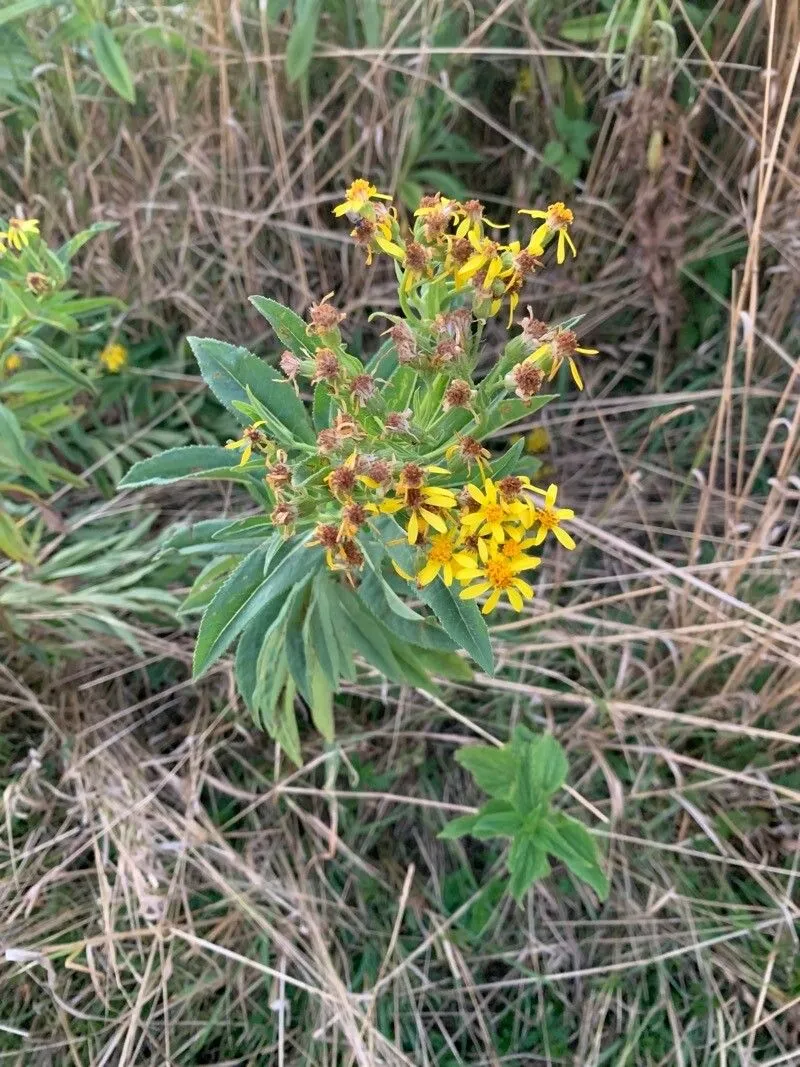
Author: L.
Bibliography: Sp. Pl.: 871 (1753)
Year: 1753
Status: accepted
Rank: species
Genus: Senecio
Vegetable: Unknown
Observations: Europe to Siberia and Türkiye
Broad-leaved ragwort, scientifically known as Senecio sarracenicus, is a resilient and adaptable plant native to a wide geographical range stretching from Europe through to Siberia and Türkiye. This botanical species was first described in 1753 by the famed botanist Carl Linnaeus in his seminal work “Species Plantarum”.
The Broad-leaved ragwort is a member of the Asteraceae family, which is renowned for its diverse and extensive array of flowering plants. These plants often have considerable ecological roles, contributing significantly to their habitats’ biodiversity.
Typically found in moist and well-drained environments such as riverbanks, wetlands, and damp meadows, S. sarracenicus thrives in regions that provide ample moisture and sunlight. Its broad, lush leaves and yellow flower heads are distinguishable traits that contribute to its common name. The plant can grow to a substantial height, with robust stems that support its floriferous nature.
The flowers of the Broad-leaved ragwort, like many in the Asteraceae family, are composite, made up of numerous tiny florets that form a conspicuous and attractive inflorescence. These flowers not only add to the aesthetic appeal of the landscapes in which they grow but also play vital roles in supporting local ecosystems, providing nectar and pollen for a variety of insects.
The extensive distribution of Senecio sarracenicus across such a broad swath of the Eurasian continent highlights its adaptability to a wide range of climatic and soil conditions. This adaptability makes it an interesting subject for botanical studies focused on ecological resilience and the impacts of various environmental conditions on plant morphology and distribution.
In sum, the Broad-leaved ragwort, Senecio sarracenicus, stands out not only for its botanical characteristics and ecological roles but also for its widespread presence across a diverse range of habitats. Understanding and preserving this plant contributes to maintaining the ecological balance and biodiversity of the regions it inhabits.
Deu: fluss-greiskraut
Dan: saracenisk brandbæger
Eng: broad-leaved ragwort, saracen’s woundwort
Nld: rivierkruiskruid
Swe: parkstånds, flodstånds, kolastånds, skogsstånds
Cym: creulys llydanddail, creulys lydanddail
En: Broad-leaved Ragwort, Saracen’s Woundwort
Be: Старасцень прырэчны
Cs: Starček poříční
Da: Saracenisk brandbæger
Nl: Rivierkruiskruid
Et: Jõgi-ristirohi
Fi: Puistovillakko
Fr: Séneçon des cours d’eau
De: Fluss-Greiskraut, Fluss-Kreuzkraut, Flussgreiskraut, Flusskreuzkraut, Fluß-Greiskraut
Lv: Upes krustaine
Gv: Bossan mollagh mooar
Sv: Parkstånds, Flodstånds, Kolastånds, Skogsstånds
Cy: Creulys Llydanddail, Creulys Lydanddail
Taken Aug 15, 2013 by Photoflora – Benoit BOCK (©)
Taken Aug 15, 2013 by Photoflora – Benoit BOCK (©)
Taken Aug 15, 2013 by Photoflora – Benoit BOCK (©)
Taken Aug 15, 2013 by Photoflora – Benoit BOCK (©)
Taken Sep 10, 2019 by Werner Rom (cc-by-sa)
Taken Jul 17, 2022 by Michal Svit (cc-by-sa)
Taken Jul 28, 2021 by JP Roos (cc-by-sa)
Taken Aug 16, 2020 by joe Huttary (cc-by-sa)
Taken Jun 2, 2022 by b v (cc-by-sa)
Taken Sep 10, 2019 by Werner Rom (cc-by-sa)
Taken Apr 12, 2020 by Fernando Herrero (cc-by-sa)
Taken Aug 18, 2021 by ric thom (cc-by-sa)
Taken Aug 20, 2022 by Erika Van Drimmelen (cc-by-sa)
Taken Sep 10, 2019 by Werner Rom (cc-by-sa)
Taken Jul 22, 2022 by Georges-Marie BÉGHIN (cc-by-sa)
Taken Oct 14, 2021 by Francois Lelievre (cc-by-sa)
Taken Aug 15, 2013 by Photoflora – Benoit BOCK (©)
Taken Aug 15, 2013 by Photoflora – Benoit BOCK (©)
Taken Aug 15, 2013 by Photoflora – Benoit BOCK (©)
Taken Aug 15, 2013 by Photoflora – Benoit BOCK (©)
Taken Jan 1, 1970 by Photoflora – L’Abbé COSTE (©)
© copyright of the Board of Trustees of the Royal Botanic Gardens, Kew.
Family: Myrtaceae Author: (F.Muell.) K.D.Hill & L.A.S.Johnson Bibliography: Telopea 6: 402 (1995) Year: 1995 Status:…
Family: Rubiaceae Author: Pierre ex A.Froehner Bibliography: Notizbl. Bot. Gart. Berlin-Dahlem 1: 237 (1897) Year:…
Family: Sapindaceae Author: Koidz. Bibliography: J. Coll. Sci. Imp. Univ. Tokyo 32(1): 38 (1911) Year:…
Family: Asteraceae Author: A.Gray Bibliography: Pacif. Railr. Rep.: 107 (1857) Year: 1857 Status: accepted Rank:…
Family: Fabaceae Author: Medik. Bibliography: Vorles. Churpfälz. Phys.-Ökon. Ges. 2: 398 (1787) Year: 1787 Status:…
Family: Aspleniaceae Author: (Cav.) Alston Bibliography: Bull. Misc. Inform. Kew 1932: 309 (1932) Year: 1932…